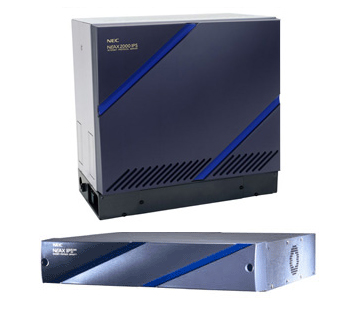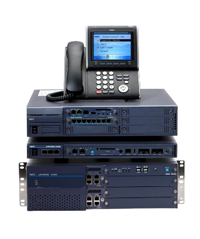Live Support - Click To Chat
ProAction Partners
Breaking UK Telephony News
|
ProAction Networks was co-founded by Alex Maggs. Alex has worked with the NEC 2000 IPS and it's associated technologies since 2002. He was originally trained by Crane in the UK, and then by NEC and Philips in the UK, The Netherlands and the U.S.A. His experience as both grass-roots engineer, manager of a team of NEC 2000 IPS engineers and Project Manager enables us to bring you this free site aiming to help fill the void of resources and information on this product. All has helped sell, install and resolve issues regarding the NEC 2000 IPS and Zeacom Server all over the world. Our belief in the system, along with Alex's experience has meant ProAction Networks has continued to maintain and sell this system despite it's 'underdog' status. Alex says "with this site, we have tried to construct some useful overview information, including a system overview, below - which includes a general overview combined with some of my own knowledge of the architecture and evolution of the systems over the years... ...the 2000 IPS is a rock solid design - although quirky and full of history! Probably it's biggest asset - the thoroughbred, age-old architecture and backwards compatibility is probably also it's achilles heel - holding it back from moving with the times, not quite as fast as it's competators. This is due to it's foundation in an era of pure TDM and old-school telephony."
System Overview
NEC Univerge NEAX 7400 2000 IPS has been rebranded and renamed a variety of times throughout it's long life. It is known in all revisions as the NEC NEAX 7400, and until around 2001 known as the NEC NEAX 7400 IVS (Integrated Voice Server). Possibly to tie the brand in more closely with the emerging convergence of voice and data technologies (VoIP), it was rebranded as the NEC NEAX 2000 IPS (Internet Protocol Server). Various corporate incarnations have also seen the IPS distributed as a Philips product - in white, as a 'Sopho IPS'. The NEAX 2000 IPS functions as a standalone telephony system supporting both IP and traditional circuit switched connectivity. Yet it can also be networked with other NEC telephony devices such as the NEAX IPS DMR, the NEAX 2400 IPX and other NEAX 2000 IPS units. In this case, the NEAX 2000 IPS supports node-to-node peer-to-peer connectivity or node-to-node circuit switched connectivity. Each Remote host can accommodate up to 255 nodes (telephones/endpoints) networked together, with the main site hosting up to 1000 nodes as well. The UNIVERGE NEAX 2000 IPS supports a maximum of 952 IP stations, 980 TDM stations or a combined total of 980 stations. Up to 952 peer-to-peer IP stations and 64 legacy TDM stations are available in a single modular chassis. Up to eight chassis can be stacked together providing a maximum capacity of 512 TDM stations. Each host can accommodate up to 30 UNIVERGE NEAX IPS-DMR remote systems and up to 30 ISDN PRI links.
The UNIVERGE NEAX 2000 IPS provides a rich set of both Key and PBX features and is positioned to provide a comprehensive cost effective solution for the small to medium sized business, hotel property or the enterprise network environment. The UNIVERGE NEAX 2000 IPS provides utmost investment protection by allowing the user to take full advantage of both today's and tomorrow's technological advancements. Pure IP switching provides communications between IP Dterms and also provides CCIS network connections with other NEAX 2000 IPS systems. TDM switching provides for communication between legacy stations and trunks. Connections between IP Dterms / CCIS-over-IP and legacy stations / trunks are made via IP Pads, which convert packet-based voice/data to TDM-based voice / data and vice versa. HistoryThe greatest change in architecture occured in 2001, when the product changed from NEAX IVS to NEAX 2000 IPS. The CPU (the CP-14), was replaced with the CP-24 processor which now incorporated onboard Ethernet. Previously, ethernet was only available for IP-Trunking (seperate PBXs together) and OAI (connectivity to an application server), and on a seperate card. CP24 processor had on-board ethernet for a variety of purposes, including management over IP, inter-econnection of seperate PBXs, running distributed cabinets over IP, providing part of the functionality of IP telephone endpoints and lastly to interface to 3rd party products. The main form of the NEC NEAX 2000 IPS is shown above, in the form of a 10u cabinet which can be rackmounted, wallmounted or floor mounted. The cabinets are known as a PIM (Programming Interface Module) and are modular up to a maximum of 8 cabinets per Main Site. In addition, distributed PIMs can be added, further increasing the capacity of the system.
In 2007, the chassis was redesigned with a variety of operational improvements and slots for more cards. When these smaller cabinets are run as distributed remote modules of a main site, they're known as DMR cabinets (Distributed Module Remote)
NEC NEAX 2000 IPS systems are generally economically viable when over 40 extensions are required. Once they're econimically viable, they can offer a vast array of features making it one of the most diverse systems on the market. Due to the exceptional backwards compatibility of the system (you can run many cards from a 1983 release in a 2008 system), whilst being a full blown VoIP PBX, supporting many emerging standards like Vo-Fi DECT and SIP Trunking, it will also support all older technologies like analogue/POTs lines, basic rate, Q-SIG, H323 and so on. The main assets in the Univerge NEC NEAX 7400 2000 IPS are:
|
 The NEC UNIVERGE™ NEAX® 2000 IPS is an enterprise class IP based communications system. It provides pure voice-over-IP (VoIP) peer-to-peer connections across corporate local and wide area networks (LAN/WAN) as well as supporting time division switching (TDM). The NEC NEAX 2000 IPS offers flexibility by providing a choice of time division switching, pure peer-to-peer IP connectivity or a combination of both, all in one system.
The NEC UNIVERGE™ NEAX® 2000 IPS is an enterprise class IP based communications system. It provides pure voice-over-IP (VoIP) peer-to-peer connections across corporate local and wide area networks (LAN/WAN) as well as supporting time division switching (TDM). The NEC NEAX 2000 IPS offers flexibility by providing a choice of time division switching, pure peer-to-peer IP connectivity or a combination of both, all in one system. UNIVERGE NEAX 2000 IPS users have access to hundreds of service features and telephony applications that enhance productivity, reduce operating costs and improve communications efficiently. The innovative modular hardware and software design allows efficient, effective growth within each module from its minimum to its maximum configuration. The UNIVERGE NEAX 2000 IPS software design is as advanced as its hardware. It ensures the system will support evolving applications and have the reliability needed to compete in today's world and into tomorrow's. The software is designed with modularity in mind. Together, these modular building blocks allow customers to initially buy what they need and add capacity and capabilities as the business demands, resulting in a greater degree of cost control for new installations and for upgrades to features, capacities and the software versions. Many parts of the architecture are hot-swappable, reducing your operating costs and improving uptime.
UNIVERGE NEAX 2000 IPS users have access to hundreds of service features and telephony applications that enhance productivity, reduce operating costs and improve communications efficiently. The innovative modular hardware and software design allows efficient, effective growth within each module from its minimum to its maximum configuration. The UNIVERGE NEAX 2000 IPS software design is as advanced as its hardware. It ensures the system will support evolving applications and have the reliability needed to compete in today's world and into tomorrow's. The software is designed with modularity in mind. Together, these modular building blocks allow customers to initially buy what they need and add capacity and capabilities as the business demands, resulting in a greater degree of cost control for new installations and for upgrades to features, capacities and the software versions. Many parts of the architecture are hot-swappable, reducing your operating costs and improving uptime. In 2003 a smaller chassis was released (left), known as the NEC NEAX DM (Distributed Module). This had a variety of purposes - it was sold far cheaper than the full size cabinet, it was more compact, and ideal for small installations. It was limited to 3 cabinets at a main site, meaning you could run approximately 90 TDM (Time Division Multiplex) handsets, and 1000 IP extensions from a single site.
In 2003 a smaller chassis was released (left), known as the NEC NEAX DM (Distributed Module). This had a variety of purposes - it was sold far cheaper than the full size cabinet, it was more compact, and ideal for small installations. It was limited to 3 cabinets at a main site, meaning you could run approximately 90 TDM (Time Division Multiplex) handsets, and 1000 IP extensions from a single site.